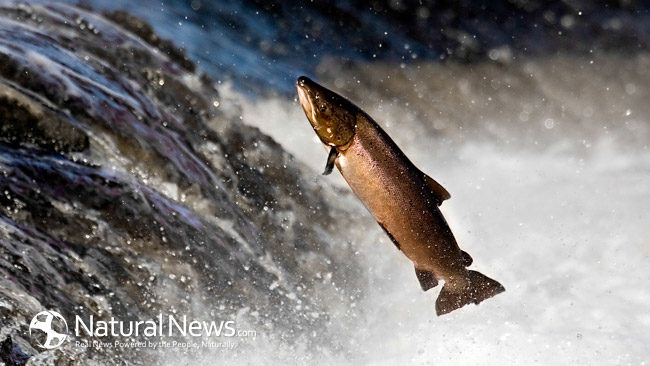Fish is a food with many misconceptions. In the past, this food was a fantastic source of nutrition — but times have changed.
According to a number of environmental experts, organizations, and groups, there are still a few types of fish that are safe to eat. Unfortunately, there are quite a few contaminated fish on the market today, as well.
Years ago, fish was a great source of omega-3 fatty acids, healthy monounsaturated fats, and protein. But today, they are packed with unsafe levels of radiation and mercury, because of the Fukushima power plant meltdown and the poisoning of our environment.
Nowadays, every fish on earth has some level of mercury. Some have much higher levels than others do. Here are what some experts say are the fish to avoid — and the best to eat.
Fish to Avoid
Avoid eating these, or eat them in very small quantities. If you’re an expectant mother — avoid these fish entirely.
- Tilefish — Tilefish is moderately acidic — and very high in mercury levels. The EPA warns people — especially expectant mothers, women and small children — to avoid eating it. Atlantic tilefish that ranges from the Gulf of Mexico to New England appears to be safe. But unless you know exactly which species you’re eating, you’re better off avoiding it, altogether. Despite the warnings about excessive mercury contamination, tilefish is often served in restaurants.
- Mackerel — Spanish, king, and gulf mackerel are moderately acidic — with high amounts of methyl mercury. Researchers believe mercury coming from industrial sources — like coal plants, the manufacturing of chlorine, and waste incinerators — is spread through the air and eventually ends up in the water. The larger a fish grows, and the longer the lifespan — the more mercury the fish accumulates in their lifetime.
- Shark — Shark can be dreadfully unhealthy. Jennifer V. Schmidt, Ph.D., molecular biologist and Associate Professor in the Department of Biological Sciences at the University of Illinois at Chicago, says, “Shark meat contains high levels of many dangerous environmental chemicals. As some of the largest and longest-lived ocean predators, sharks are in a position to have the highest levels of poisons.” Scientists suspect that sharks accumulate mercury in their body because they eat many smaller fish. Sharks are also endangered.
- Orange Roughy — The Environmental Defense Fund (EDF) issued a health advisory, placing orange roughy’s eco-rating at “worst” and its mercury level at “elevated.” This fish lives 100 years or more.
- Marlin — Marlin contains dangerous levels of mercury and is highly acidic. The United States Environmental Protection Agency (EPA) health guidelines for fish consumption indicate that any fish with a mercury level greater than 1.5 parts per million (ppm) should not be consumed in any amount. Marlin has been recorded to have mercury levels as high as 15 ppm. Additionally, a study reported an average mercury level of 4.08 ppm for blue marlin that was sampled in the waters of Australia.
- Farmed Salmon or Atlantic Salmon — Most farmed salmon — and all salmon labeled “Atlantic salmon” — is farmed in tightly packed, open-net pens with an extensive amount of parasites and diseases that threaten the wild salmon trying to swim by to their ancestral spawning waters. Farmed salmon are fed fishmeal, given antibiotics to combat diseases, and have levels of PCBs — high enough for the EDF to issue a health advisory.
- Swordfish — Swordfish should be avoided. Swordfish have been found to contain the highest levels of mercury found in any of the larger fish. The Food and Drug Administration (FDA) strongly advises that pregnant women, women of childbearing age, and young children should avoid eating swordfish, shark, mackerel, and tilefish. Swordfish often harbor high levels of methyl mercury — a potent human neurotoxin. Methyl mercury readily crosses the placenta and has the potential to damage the fetal nervous system, significantly.
- Grouper — Grouper should also be avoided at all costs. Grouper is highly acidic and has high levels of mercury. The EDF issued a consumption advisory. The EDF eco-rating for grouper’s is listed as “worst” with an “elevated” mercury level.
Safest to Eat
When it comes to the safest fish to eat, keep in mind “smaller is better.” As a rule, the smaller ones, like sardines, scallops, and anchovies, are lower in mercury than the larger species like swordfish and tuna.
Stick to a few types that are low in mercury.
- Pacific or Alaskan wild-caught salmon
- Sardines
- Wild-caught trout
- United States Haddock
- California Halibut
- Pacific Halibut
- Red Snapper from the Gulf of Mexico
- Black Sea Bass
- Yelloweye Rockfish
- Yellowtail Rockfish
Choose wild-caught, sustainable fish, rather than farmed, The farmed variety have fewer healthy fats.
Avoid Mercury Exposure
The number one cause of mercury exposure in the United States is eating contaminated fish. Mercury spews out into the air from coal-burning power plants and factories. That pollution can travel halfway around the world and then settle into lakes, rivers, and oceans.
Mercury is eventually absorbed or ingested by smaller organisms and then it starts working its way up the food chain. Each step up the food chain, the mercury concentration rises. Big predatory fish — like tuna or sharks — can have especially high concentrations of mercury in their bodies.
The National Resources Defense Council (NRDC) offers a brief explanation of mercury.
“You can’t see, smell, or taste mercury contamination in fish. Cooking has no effect on it, and you can’t avoid it by cutting off the skin or other parts of the fish. “
You don’t need to eliminate fish altogether to avoid mercury exposure. When it comes to avoiding mercury, the NRDC provides The Smart Seafood Buying Guide to help you figure out which fish are safer to eat.












